Fabrication of Oblique Submicron-Scale Structures Using Synchrotron Hard X-ray Lithography
Abstract
:1. Introduction
2. X-ray Mask Fabrication
2.1. Design Principle of the X-ray Mask with Oblique Sub-Micron Structures
2.2. Fabrication of the Sub-Micron Scale X-ray Mask
3. X-ray Exposure Experiment for the Oblique Sub-Micron Structure
3.1. Intensity Contrast Calculation
3.2. Fabrication of Oblique Sub-Micron Structures
3.3. Fabrication of Oblique Groove Structures
3.4. Fabrication of the Multi Scale Structure Using Double Exposure
4. Conclusions and Discussion
Author Contributions
Funding
Institutional Review Board Statement
Informed Consent Statement
Data Availability Statement
Acknowledgments
Conflicts of Interest
References
- Teixeira, A.I.; Abrams, G.A.; Bertics, P.J.; Murphy, C.J.; Nealey, P.F. Epithelial contact guidance on well-defined micro- and nanostructured substrates. J. Cell Sci. 2003, 116, 1881–1892. [Google Scholar] [CrossRef] [Green Version]
- Zhou, J.; Zhang, X.; Sun, J.; Dang, Z.; Li, J.; Li, X.; Chen, T. The effects of surface topography of nanostructure arrays on cell adhesion. Phys. Chem. Chem. Phys. 2018, 20, 22946–22951. [Google Scholar] [CrossRef]
- Kim, S.; Jung, U.T.; Kim, S.-K.; Lee, J.-H.; Choi, H.S.; Kim, C.-S.; Jeong, M.Y. Nanostructured Multifunctional Surface with Antireflective and Antimicrobial Characteristics. ACS Appl. Mater. Interfaces 2014, 7, 326–331. [Google Scholar] [CrossRef] [PubMed]
- Ji, S.; Song, K.; Nguyen, T.B.; Kim, N.; Lim, H. Optimal Moth Eye Nanostructure Array on Transparent Glass Towards Broadband Antireflection. ACS Appl. Mater. Interfaces 2013, 5, 10731–10737. [Google Scholar] [CrossRef] [PubMed]
- Kim, M.; Kim, K.; Lee, N.Y.; Shin, K.; Kim, Y.S. A simple fabrication route to a highly transparent super-hydrophobic surface with a poly(dimethylsiloxane) coated flexible mold. Chem. Commun. 2007, 22, 2237–2239. [Google Scholar] [CrossRef]
- Sun, M.; Watson, G.S.; Zheng, Y.; Watson, J.A.; Liang, A. Wetting properties on nanostructured surfaces of cicada wings. J. Exp. Biol. 2009, 212, 3148–3155. [Google Scholar] [CrossRef] [PubMed] [Green Version]
- Mammen, L.; Bley, K.; Papadopoulos, P.; Schellenberger, F.; Encinas, N.; Butt, H.-J.; Weiss, C.K.; Vollmer, D. Functional superhydrophobic surfaces made of Janus micropillars. Soft Matter 2014, 11, 506–515. [Google Scholar] [CrossRef] [Green Version]
- Jeong, H.E.; Lee, J.-K.; Kim, H.N.; Moon, S.H.; Suh, K.Y. A nontransferring dry adhesive with hierarchical polymer nanohairs. Proc. Natl. Acad. Sci. USA 2009, 106, 5639–5644. [Google Scholar] [CrossRef] [Green Version]
- Zhao, B.; Pesika, N.; Zeng, H.; Wei, Z.; Chen, Y.; Autumn, K.; Turner, K.; Israelachvili, J. Role of Tilted Adhesion Fibrils (Setae) in the Adhesion and Locomotion of Gecko-like Systems†. J. Phys. Chem. B 2008, 113, 3615–3621. [Google Scholar] [CrossRef]
- Gravish, N.; Wilkinson, M.; Autumn, K. Frictional and elastic energy in gecko adhesive detachment. J. R. Soc. Interface 2007, 5, 339–348. [Google Scholar] [CrossRef] [Green Version]
- Agapov, R.L.; Boreyko, J.B.; Briggs, D.P.; Srijanto, B.R.; Retterer, S.T.; Collier, C.P.; Lavrik, N.V. Asymmetric Wettability of Nanostructures Directs Leidenfrost Droplets. ACS Nano 2013, 8, 860–867. [Google Scholar] [CrossRef]
- Guo, P.; Zheng, Y.; Liu, C.; Ju, J.; Jiang, L. Directional shedding-off of water on natural/bio-mimetic taper-ratchet array surfaces. Soft Matter 2011, 8, 1770–1775. [Google Scholar] [CrossRef]
- Ai, B.; Wang, L.; Möhwald, H.; Yu, Y.; Zhao, Z.; Zhou, Z.; Zhang, G.; Lin, Q. Real-Time Control of Uni-Directional Liquid Spreading on a Half-Cone Nanoshell Array. Sci. Rep. 2014, 4, 6751. [Google Scholar] [CrossRef] [Green Version]
- Trottier-Lapointe, W.; Zabeida, O.; Schmitt, T.; Martinu, L. Ultralow refractive index optical films with enhanced mechanical performance obtained by hybrid glancing angle deposition. Appl. Opt. 2016, 55, 8796–8805. [Google Scholar] [CrossRef]
- Sanchez-Valencia, J.R.; Longtin, R.; Rossell, M.D.; Gröning, P.; Groening, P. Growth Assisted by Glancing Angle Deposition: A New Technique to Fabricate Highly Porous Anisotropic Thin Films. ACS Appl. Mater. Interfaces 2016, 8, 8686–8693. [Google Scholar] [CrossRef] [PubMed]
- Hawkeye, M.M.; Brett, M.J. Glancing angle deposition: Fabrication, properties, and applications of micro- and nanostructured thin films. J. Vac. Sci. Technol. A 2007, 25, 1317. [Google Scholar] [CrossRef]
- Chang, B. Oblique angled plasma etching for 3D silicon structures with wiggling geometries. Nanotechnology 2019, 31, 085301. [Google Scholar] [CrossRef] [PubMed]
- Cho, S.-W.; Lee, H.-M.; Kim, J.-H.; Bak, J.G.; Kim, C.-K. Fabrication of Slanted Cu Nanopillars with Uniform Arrays. Nanomater. Nanotechnol. 2016, 6, 11. [Google Scholar] [CrossRef] [Green Version]
- Zhang, J.; Shokouhi, B.; Cui, B. Tilted nanostructure fabrication by electron beam lithography. J. Vac. Sci. Technol. B 2012, 30, 06F302. [Google Scholar] [CrossRef]
- Lee, Y.-E.; Lee, D.-K.; Cho, Y.H. Fabrication of anisotropic wetting surface with asymmetric structures using geometrical similarity and capillary force. Micro Nano Syst. Lett. 2019, 7, 1–7. [Google Scholar] [CrossRef] [Green Version]
- Zhao, Z.; Cao, Y.; Cai, Y.; Yang, J.; He, X.; Nordlander, P.; Cremer, P.S. Oblique Colloidal Lithography for the Fabrication of Nonconcentric Features. ACS Nano 2017, 11, 6594–6604. [Google Scholar] [CrossRef] [PubMed]
- Kim, J.H.; Chang, S.S.; Lim, G. Fabrication of multi-scale structures with multiple X-ray masks and synchrotron hard X-ray irradiations. Curr. Appl. Phys. 2014, 14, 833–837. [Google Scholar] [CrossRef]
- Faisal, A.; Beckenbach, T.; Mohr, J.; Meyer, P. Influence of secondary effects in the fabrication of submicron resist structures using deep x-ray lithography. J. Micro/Nanolith. MEMS MOEMS 2019, 18, 023502. [Google Scholar] [CrossRef]
- Schröter, T.J.; Koch, F.; Meyer, P.; Baumann, M.; Münch, D.; Kunka, D.; Engelhardt, S.; Zuber, M.; Baumbach, T.; Mohr, J. Large area gratings by x-ray LIGA dynamic exposure for x-ray phase-contrast imaging. J. Micro/Nanolith. MEMS MOEMS 2017, 16, 013501. [Google Scholar] [CrossRef]

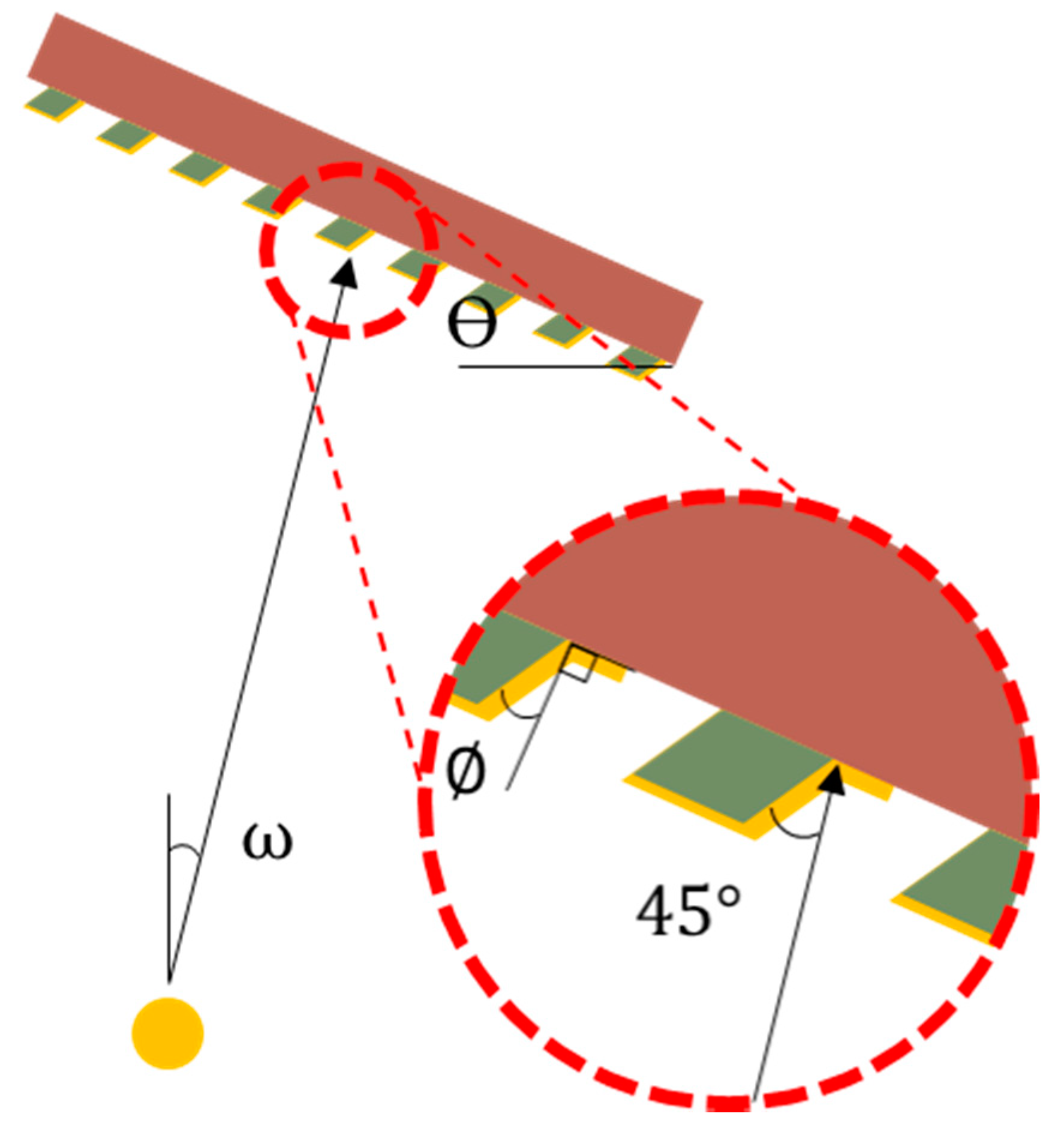
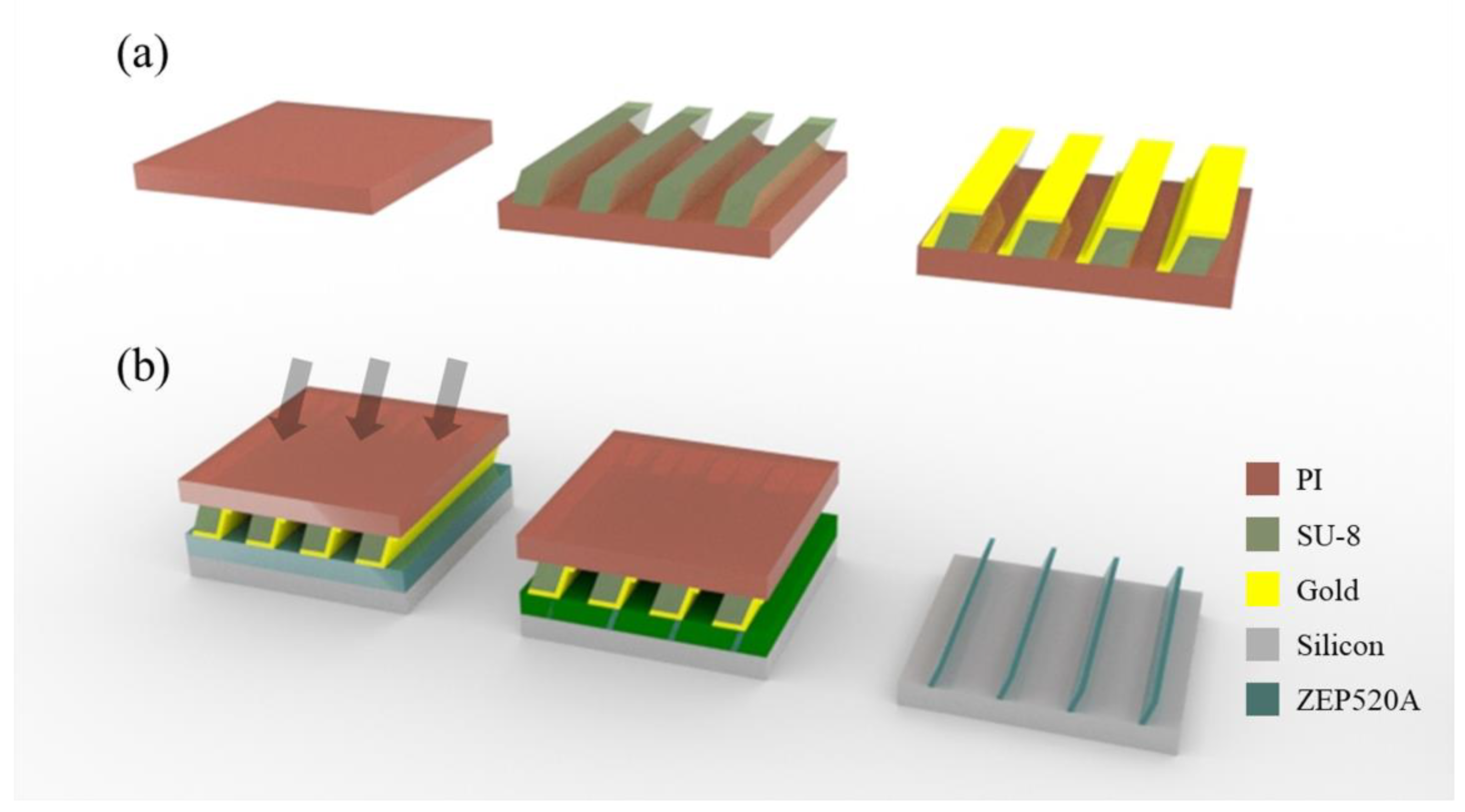
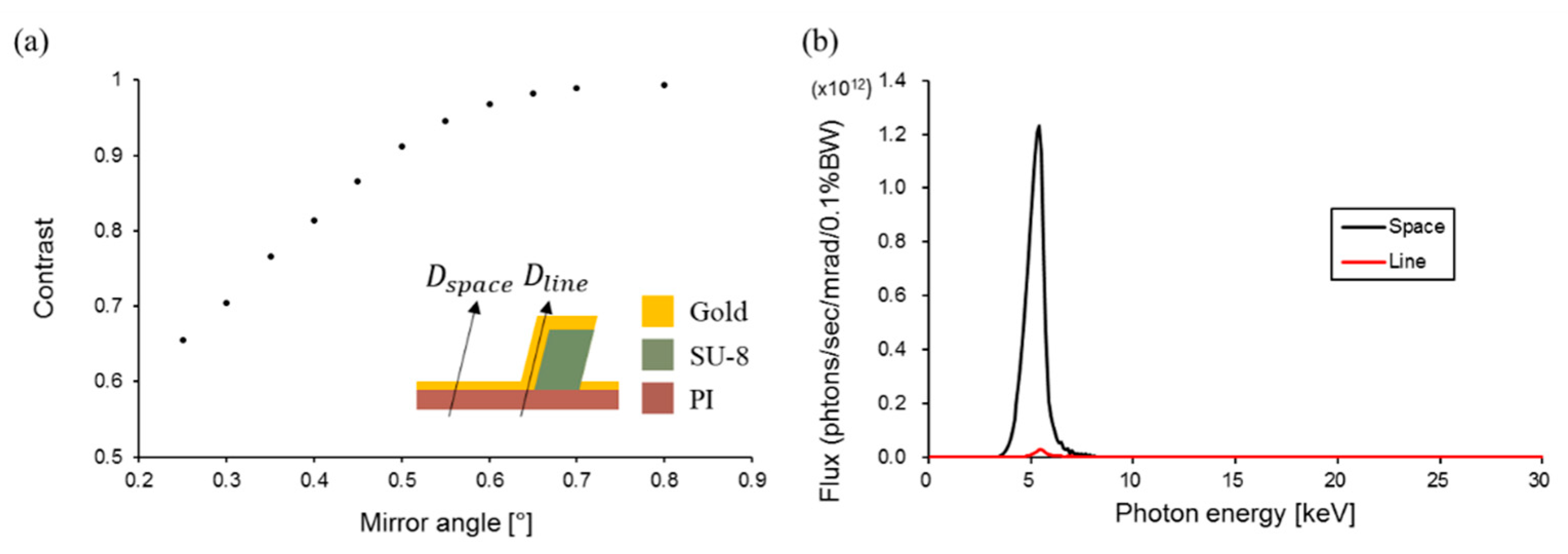
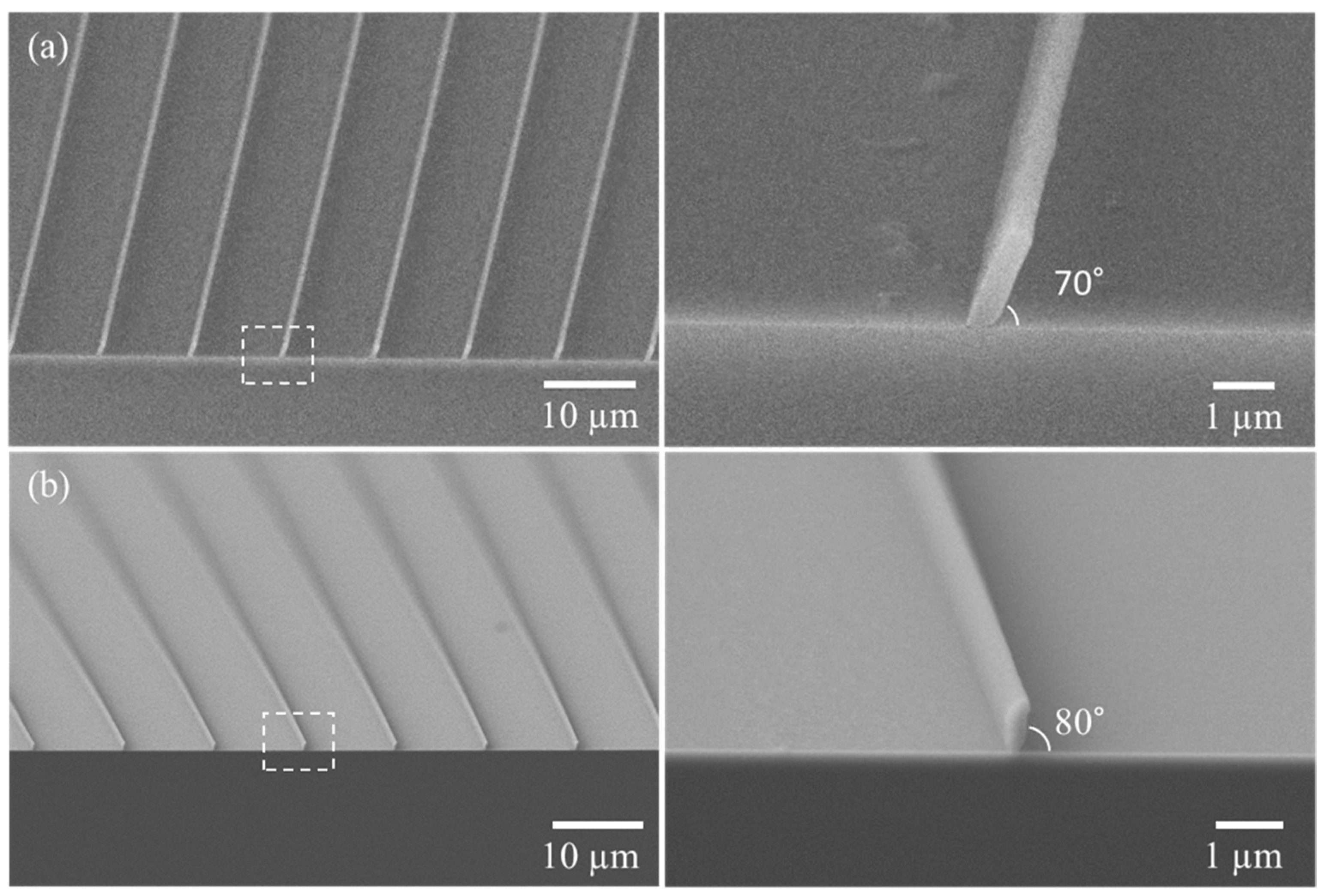
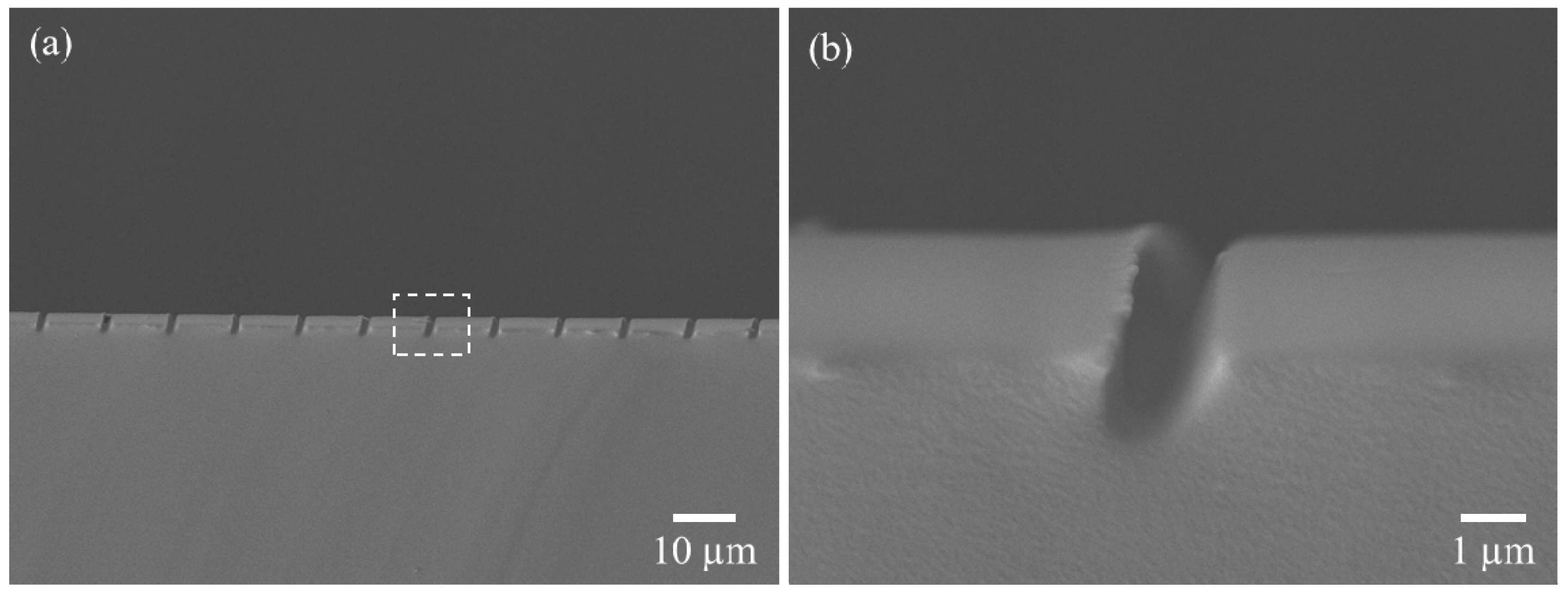
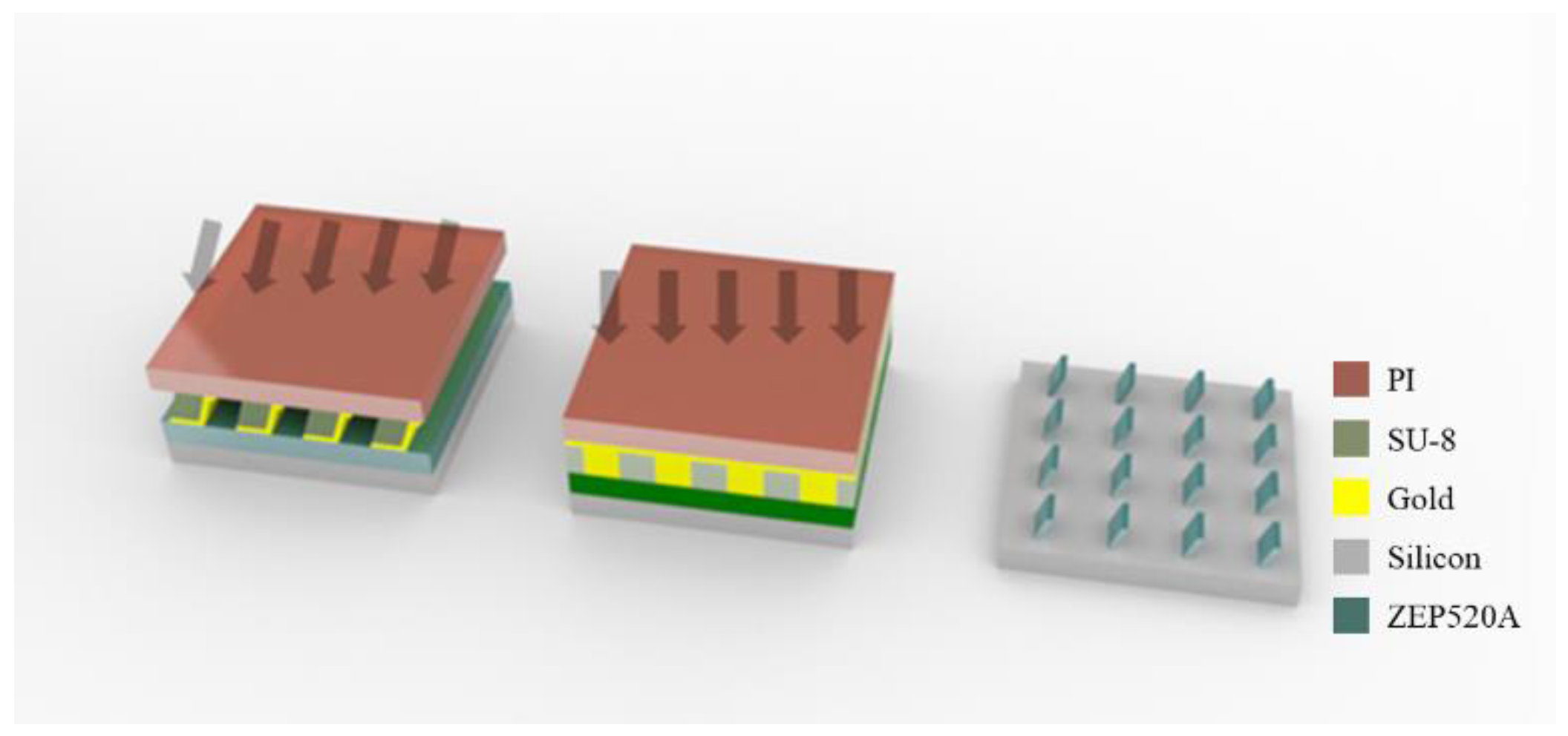
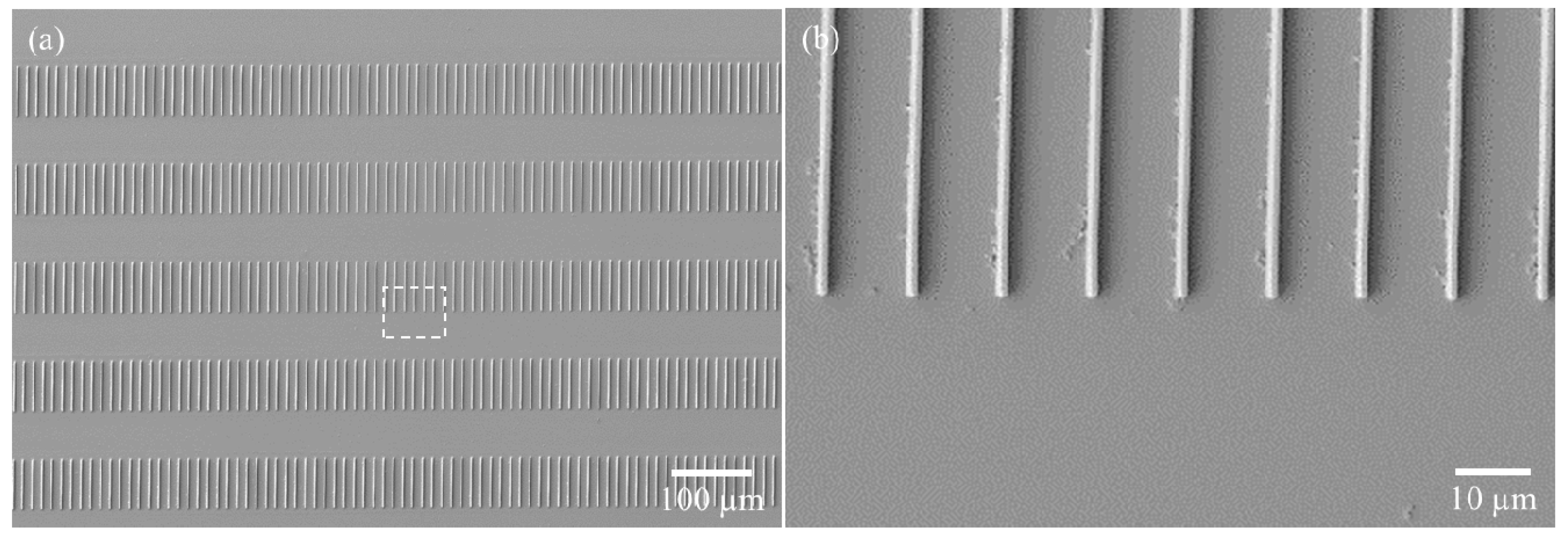

Publisher’s Note: MDPI stays neutral with regard to jurisdictional claims in published maps and institutional affiliations. |
© 2021 by the authors. Licensee MDPI, Basel, Switzerland. This article is an open access article distributed under the terms and conditions of the Creative Commons Attribution (CC BY) license (http://creativecommons.org/licenses/by/4.0/).
Share and Cite
Kim, K.; Park, K.; Nam, H.; Kim, G.H.; Hong, S.K.; Kim, S.; Woo, H.; Yoon, S.; Kim, J.H.; Lim, G. Fabrication of Oblique Submicron-Scale Structures Using Synchrotron Hard X-ray Lithography. Polymers 2021, 13, 1045. https://doi.org/10.3390/polym13071045
Kim K, Park K, Nam H, Kim GH, Hong SK, Kim S, Woo H, Yoon S, Kim JH, Lim G. Fabrication of Oblique Submicron-Scale Structures Using Synchrotron Hard X-ray Lithography. Polymers. 2021; 13(7):1045. https://doi.org/10.3390/polym13071045
Chicago/Turabian StyleKim, Kanghyun, Kyungjin Park, Hyoryung Nam, Geon Hwee Kim, Seong Kyung Hong, Suhyeon Kim, Hyeonsu Woo, Seungbin Yoon, Jong Hyun Kim, and Geunbae Lim. 2021. "Fabrication of Oblique Submicron-Scale Structures Using Synchrotron Hard X-ray Lithography" Polymers 13, no. 7: 1045. https://doi.org/10.3390/polym13071045






